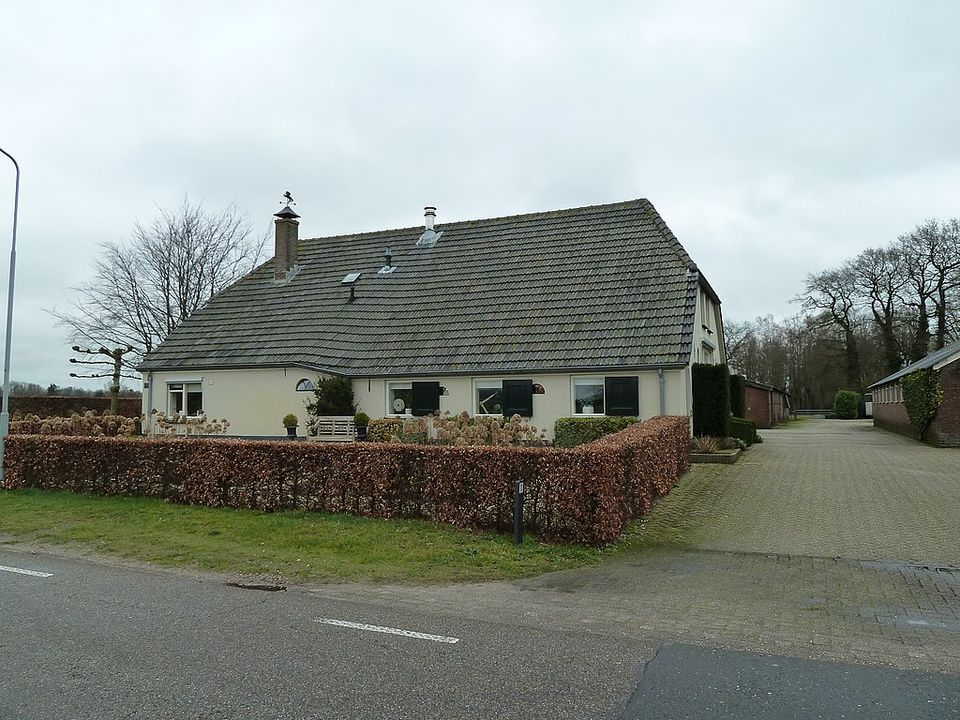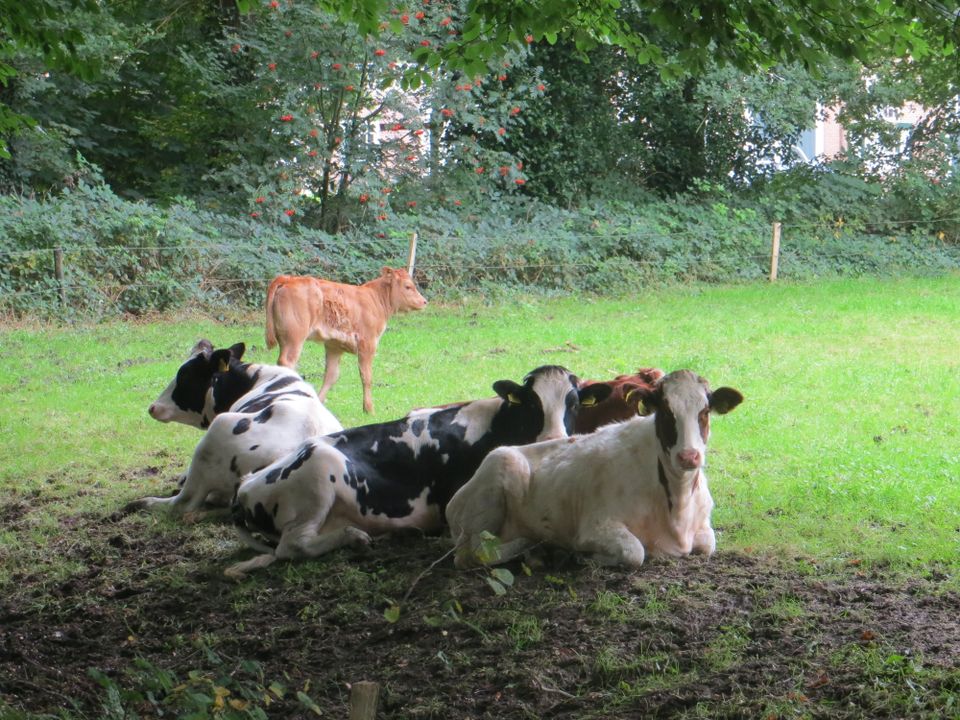Hoge Enk
The Hoge Enk is a village south of Elburg. That is why it used to be called Zudendorp, although the name Hoge Enk was also used. In 1313 ‘hoghen enge’ is first mentioned, it refers to a higher area (enk) between lower polders or marshes. Not very high, like a mound, but clearly a raise of land. When cycling from the Stadsweg ‘t Harde to the Hoge Enk, you ride on the backbone of that raise and slowly watch the land to your left and right lower. This higher sandridge has been inhabited for a long time. In the middle of ‘t Harde and the Hoge Enk you find the hamlet Aperloo, formed by only a few farms bur very old. Pre-Roman artefacts were found here in the 19th century and the shape of the landscape tells us that around the year 1000 AD people lived here. On old maps there is a road leading from Elburg to the Hoge Enk. A notorious road, the Gerichtenweg was the place where the gallows were situated. The name of the road refers to this ( gerichten=make right take place).
De Bijenkamp
On the fields of the Hoge Enk mostly oat and rye were grown in the Middle Ages but from the sixteenth century buckwheat was added. Buckwheat prospered on the poor sandy grounds. It was however very susceptible to night frost which could ruin a year’s harvest in one night. That is why it is also called ‘jammerkoren’ ( whining wheat). At the same time beekeeping developed. Bees were of great value in pollinating buckwheat and bees produced especially good honey after having feasted on buckwheat. Beekeepers sometimes had more than a hundred hives, a nice increase of income. At the Hoge Enk one of the fields was actually named after the bees; the Bijenkamp. In 1812 the beekeeper in this hamlet was called Ganglof Willemsen. In November of that year he had his family name officially registered at the town hall of Doornspijk, he chose a fitting name; Honing (honey). Nowadays a streetname in a residential area reminds us of this source of income: Bijenkamp.



